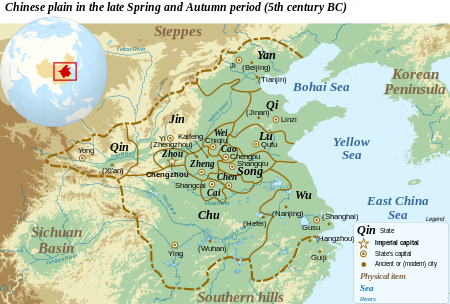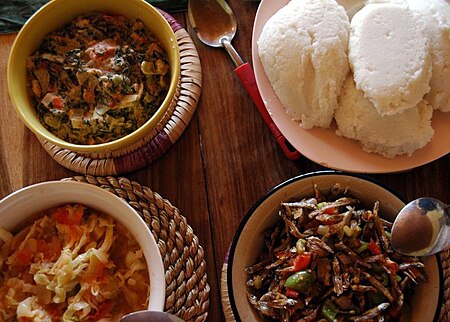Babine-Witsuwitʼen language
| ||||||||||||||||||||||||||||||||||||||||||||||||||||||||||||||||||||||||||||||||||||||||||||||||||||||||||||||||||||||||||||||||||||||||||||||||||||||||||||||||||||||||||||||||||||||||||||||||||||||||||||||||||||||||||||||||||||||||||||||||||||||||||||||||||||||||||||||||||||||||||||||||||||||||
Read other articles:

2010 single by Lil Jon featuring R. Kelly and MarioMs. ChocolateSingle by Lil Jon featuring R. Kelly and Mariofrom the album Crunk Rock ReleasedMarch 30, 2010Recorded2006-2007GenreHip hop, crunk, R&BLength3:19LabelBME/Universal[1]Songwriter(s)Lil Jon, R. Kelly, Claude KellyProducer(s)Drumma BoyLil Jon singles chronology Do You Remember (2009) Ms. Chocolate (2010) Hey (2010) Mario singles chronology Headboard(2009) Ms. Chocolate(2010) Somebody Else(2013) R. Kelly singles c…

Decisive battle (506 BC) in a war fought between the Chinese kingdoms of Wu and Chu Battle of BojuPart of Wu-Chu WarBattle of BojuDate506 BCLocationBoju, State of Chu (present-day Macheng, Hubei Province)Result Wu victoryBelligerents WuCaiTang ChuCommanders and leaders King HelüFugaiWu ZixuSun Tzu Nang WaShen Yin ShuStrength 30,000–33,000 200,000–300,000Casualties and losses Unknown (relatively minor) Almost entire army killed or captured The Battle of Boju (Chinese: 柏舉之戰) was t…

Type of receptor ligand or drug that blocks a biological response Antagonists will block the binding of an agonist at a receptor molecule, inhibiting the signal produced by a receptor–agonist coupling. A receptor antagonist is a type of receptor ligand or drug that blocks or dampens a biological response by binding to and blocking a receptor rather than activating it like an agonist. Antagonist drugs interfere in the natural operation of receptor proteins.[1] They are sometimes called …

2016年美國總統選舉 ← 2012 2016年11月8日 2020 → 538個選舉人團席位獲勝需270票民意調查投票率55.7%[1][2] ▲ 0.8 % 获提名人 唐納·川普 希拉莉·克林頓 政党 共和黨 民主党 家鄉州 紐約州 紐約州 竞选搭档 迈克·彭斯 蒂姆·凱恩 选举人票 304[3][4][註 1] 227[5] 胜出州/省 30 + 緬-2 20 + DC 民選得票 62,984,828[6] 65,853,514[6] 得…

Ginasservis Église Saint-Laurent. Blason Administration Pays France Région Provence-Alpes-Côte d’Azur Département Var Arrondissement Brignoles Intercommunalité Communauté de communes Provence Verdon Maire Mandat Hervé Philibert 2020-2026 Code postal 83560 Code commune 83066 Démographie Gentilé Ginasservois, Ginasservoises Populationmunicipale 1 983 hab. (2021 ) Densité 53 hab./km2 Géographie Coordonnées 43° 40′ 19″ nord, 5° 50′ 58″&…

Locals casino and brewery in Nevada, US Holy Cow Casino and BreweryThe former Holy Cow building in 2011. Location Las Vegas, Nevada 89104 Address 2423 Las Vegas Blvd South[1]Opening date1955[2][3]Closing dateMarch 22, 2002; 22 years ago (March 22, 2002)Casino typeLand-BasedOwnerBig Dog's Hospitality GroupPrevious namesFoxy's Deli (1955–1975)Foxy's Firehouse (1976–1988)Renovated in19761992Coordinates36°08′38″N 115°09′25″W / 3…

Team representing Italy in men's international rugby union This article is about the men's team. For the women's team, see Italy women's national rugby union team. For the men's rugby sevens side, see Italy national rugby sevens team. Not to be confused with Italy national rugby league team. ItalyNickname(s)Gli Azzurri (The Blues) ItalrugbyUnionItalian Rugby FederationHead coachGonzalo QuesadaCaptainMichele LamaroMost capsSergio Parisse (142)Top scorerDiego Domínguez (983)Top try scorerMarcello…

MarokoJulukanأسود الأطلس (Ousud Al-atlas,'Singa Atlas')AsosiasiFederasi Sepak Bola Kerajaan Maroko (FRMF)KonfederasiCAF (Afrika)Sub-konfederasiUNAF (Afrika Utara)Pelatih Walid RegraguiKaptenHakim ZiyechPenampilan terbanyakNoureddine Naybet (115)[1]Pencetak gol terbanyakAhmed Faras (36)[1]Stadion kandangStadion Mohamed V, CasablancaKode FIFAMARPeringkat FIFATerkini 13 1 (4 April 2024)[2]Tertinggi10 (April 1998 [3])Terendah95 (September 2010)Peringkat EloT…

Australian electorate WyongNew South Wales—Legislative AssemblyInteractive map of district boundaries from the 2023 state electionStateNew South WalesDates current1962–19731988–presentMPDavid HarrisPartyLabor PartyNamesakeWyongElectors57,477 (2019)Area640.55 km2 (247.3 sq mi)DemographicProvincial Electorates around Wyong: Cessnock Lake Macquarie Swansea Gosford Wyong Pacific Ocean Gosford The Entrance The Entrance Wyong is an electoral district of the Legislative Assemb…

Mountain ranges stretching the length of Italy This article is about the Italian mountain range. For other uses of Apennine, see Apennine (disambiguation). Not to be confused with Pennine Alps or Pennines. Apennine MountainsCorno Grande in Gran Sasso e Monti della Laga National Park, AbruzzoHighest pointPeakCorno Grande (Great Horn)Elevation2,912 m (9,554 ft)[1]ListingList of mountain rangesCoordinates42°28′9″N 13°33′57″E / 42.46917°N 13.56583°E…

Enzyme RNA polymerase IV (RNAP IV) is an enzyme that synthesizes small interfering RNA (siRNA) in plants, which silence gene expression.[1][2][3] RNAP IV belongs to a family of enzymes that catalyze the process of transcription known as RNA Polymerases, which synthesize RNA from DNA templates.[4] Discovered via phylogenetic studies of land plants, genes of RNAP IV are thought to have resulted from multistep evolution processes that occurred in RNA Polymerase II ph…

Meal (coarse flour) ground from dried corn This article is about coarsely ground corn flour. For finely ground corn flour, see Maize flour. Indian meal redirects here. For food of India, see Indian cuisine. Cornmeal Cornmeal is a meal (coarse flour) ground from dried corn (maize). It is a common staple food and is ground to coarse, medium, and fine consistencies, but it is not as fine as wheat flour can be.[1][2][3] In Mexico, very finely ground cornmeal is referred to as…

此條目需要补充更多来源。 (2024年1月)请协助補充多方面可靠来源以改善这篇条目,无法查证的内容可能會因為异议提出而被移除。致使用者:请搜索一下条目的标题(来源搜索:米哈伊爾·圖哈切夫斯基 — 网页、新闻、书籍、学术、图像),以检查网络上是否存在该主题的更多可靠来源(判定指引)。 此條目可参照俄語維基百科相應條目来扩充。 (2024年1月9日)若您熟悉来…

Este artículo trata sobre el supuesto planeta ubicado en el sistema solar exterior. Para el planeta descrito por Percival Lowell en 1906, véase Planeta X. No debe confundirse con Nibiru. Planeta Nueve Representación artística del Planeta Nueve como un gigante de hielo eclipsando el centro de la Vía Láctea, con un sol en forma de estrella en la distancia.[1] La órbita de Neptuno se muestra como una pequeña elipse alrededor del Sol.DescubrimientoDescubridor Konstantin BatyginFecha 2…

Presiden ZanzibarBendera NegaraPetahanaHussein Mwinyisejak 3 November 2020Masa jabatanLima tahun, dapat diulang sekailPejabat perdanaSheikh Abeid Amani KarumeDibentuk12 Januari 1964 Presiden Zanzibar (bahasa Swahili: Rais wa Zanzibar) adalah kepala Pemerintahan Revolusioner Zanzibar, yang merupakan pemerintahan semi-otonom di Tanzania. Presiden juga merupakan ketua Dewan Revolusi, yang anggotanya diangkat oleh presiden, dan sebagian harus dipilih dari Dewan Perwakilan Rakyat. Presiden d…

Pour les articles homonymes, voir In vitro (homonymie). Culture in vitro d'un plant de vigne, de la Forschungsanstalt Geisenheim. In vitro (en latin : « sous verre ») s'applique à toute activité expérimentale réalisée sur micro-organismes, organes ou cellules en dehors de leur contexte naturel (en dehors de l'environnement, de l'organisme vivant ou de la cellule) et en conditions définies et contrôlées. Un exemple est la fécondation in vitro (FIV). Étymologie et caract…

Species of tree Tilia caroliniana Botanical drawing of Tilia caroliniana subsp. heterophylla. Scientific classification Kingdom: Plantae Clade: Tracheophytes Clade: Angiosperms Clade: Eudicots Clade: Rosids Order: Malvales Family: Malvaceae Genus: Tilia Species: T. caroliniana Binomial name Tilia carolinianaMill. Synonyms[1] Tilia americana var. mexicana (Schltdl.) Hardin Tilia mexicana Schltdl. Tilia caroliniana Mill. is a species of tree in the family Malvaceae native to the south…

رسم توضيحي من كاليفانبوغاتأساطير البلطيق هي مجموعة أساطير خاصة بشعب البلطيق نابعة من الوثنية البلطيقية واستمرت بعد التنصير والفلكلور البلطيقي. الأصول تنشأ جذور الأساطير البلطيقية من الأساطير الهندو أوروبية البدائية. كانت منطقة البلطيق واحدة من آخر المناطق في أوروبا التي …

Play by Shakespeare Joan la Pucelle redirects here. For the historical figure, the patron saint of France, see Jehanne la Pucelle. For the manuscript illuminator, see Jean Pucelle. First page of The first Part of Henry the Sixt from the First Folio (1623). Henry VI, Part 1, often referred to as 1 Henry VI, is a history play by William Shakespeare—possibly in collaboration with Thomas Nashe and others—believed to have been written in 1591. It is set during the lifetime of King Henry VI of Eng…

PankrationDua atlet bersaing di Pankration. Amfora Panathenaik, dibuat di Athena pada tahun 332–331 SM, selama masa pemerintahan Niketes. Dari CapuaFokusTinju dan GulatNegara asalYunani KunoOlahraga olimpikDiperkenalkan pada tahun 648 SM di Olimpiade ke-33 Patung Agias, putra Acnonius, dan pemenang pankration dalam tiga Pertandingan Panhellenik. Patung ini menempati Posisi III dari Ex voto of Daochos. Tinggi: 2 meter (6 kaki 7 inci) Pankration (bahasa Yunani: παγκράτιον) merupaka…